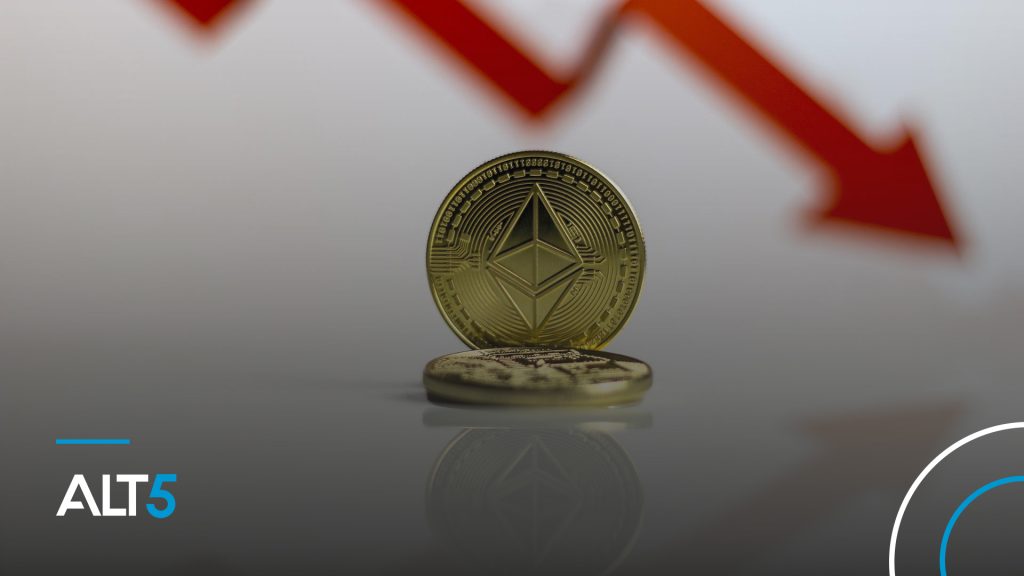Locked collateral and margin calls add to selling pressure in crypto
Ether underperforms given its use in defi protocols
Crypto market capitalization drops below $1 trln

The combination of a more difficult macro backdrop and the crypto-specific pressures stemming from stresses in the decentralized finance (defi) area have taken a significant toll on crypto token prices.
Macro headwinds remain in the medium-term but should be less so in the short-term
Macro conditions are likely to get worse before they get better. The past week’s events of high inflation prints, a series of central bank tightening measures, and outsized declines in both equity and bond have left a mark on sentiment that will be evident for some time.
There are few scheduled events in the coming week that have the potential to shed more light on the macro fundamentals driving markets. That may allow for some near-term consolidation of recent losses in financial assets broadly. However the reality is that the combination of high inflation, tighter monetary policy and downside risk to economic growth will, to some degree, persist as a headwind to crypto token prices in the coming months.
Effects of defi defections continue to be felt
In the defi space, it still unclear how the Celsius situation will develop. Thus far there has been no announcement on when or how they may begin to resume withdrawals/trading on their crypto lending platform after suspending them on June 12. In the meantime, they have locked up collateral of counterparties in a manner that may be forcing some to liquidate other holdings to meet margin calls.
Margin calls and locked collateral
There is little public clarity around any of those actions or possible transactions. But at the very least, it remains a material drag on sentiment and, by extension, crypto token prices. Moreover, this follows—and may be partly a function of—the collapse of the TerraUSD/LUNA project and tokens last month. We characterize it that way because losses stemming the LUNA project fallout may be causing some of the affected investors to liquidate other defi/crypto holdings in order to meet their own margin calls or risk parameters.
As one example, on Friday the CEO of Blockfi, a major crypto lending platform, tweeted tha, “we fully accelerated the loan and fully liquidated or hedged” all of the associated collateral of a large client that failed to meet its obligations. That public statement coincided with widespread press reports of a crypto hedge fund facing liquidations and possible insolvency.
Ether underperforms bitcoin
Blockfi’s actions are surely not isolated and may well be followed by others, contributing to a cycle of forced selling. It may also be playing a role in the underperformance of ether (-44%) relative to bitcoin (-34%) since this latest wave lower in prices began on June 9-10. That’s because many of the smart contracts in defi are built on the Ethereum blockchain. Hence, the collapse of the TerraUSD/Luna protocol last month, and now Circle’s current halt of withdrawals may be enhancing selling pressure in ether in particular, as it is a widely used vehicle to access those protocols.
Crypto market capitalization declines
There will be some attention given to the fact the total market capitalization of crypto token assets has now dropped below $1 trln (according to data from CoinMarketCap) alongside the latest decline in prices. As of June 17, it stood at approximately $905 mln. By any measure, that is a painful retreat from the nearly $3 trln peak capitalization level reached last November.
The Fed liquidity pump, and subsequent pivot, as catalysts
However, it is also useful to recognize these milestones in context. First, the peak in market capitalization occurred alongside the approximate peak in financial asset prices broadly last year. The subsequent turnaround in prices was a direct result of the Federal Reserve’s “pivot” in monetary policy in November 2021, where the central bank signaled that it would begin to reverse the massive liquidity injections it started in March 2020 to help counter the negative economic effects of the pandemic.
Comparisons to pre-pandemic price levels are informative
Looking a bit further back, total crypto market capitalization had only moved above the $1 trln threshold in January 2021, aided (again) by central bank (and government fiscal) liquidity that inflated the value of a wide range of financial and real assets, including crypto prices. As a comparison, in the two years prior to the start of the pandemic in March 2020, total crypto market cap ranged from approximately $100 mln to $450 mln.
This by no means is an effort to trivialize the recent losses. Rather, can be helpful to view those declines in the context of the dramatic rise in crypto token prices over the past four years, and recognize that current market capitalization is still well above—indeed a multiple of—what it was just 3-4 years ago.
Disclaimer:
Digital Assets Weekly Market Update is for informational purposes only and does not constitute, either explicitly or implicitly, any provision of services or products by ALT 5 Sigma (“ALT 5”). Investors should determine for themselves whether a particular service or product is suitable for their investment needs or should seek such professional advice for their particular situation. ALT 5 Sigma. makes no representation or warranty to any investor regarding the legality of any investment, the income or tax consequences, or the suitability of an investment for such investor. ALT 5 Sigma does not solicit or provide any financial advice. This is at the sole discretion of the individual.
